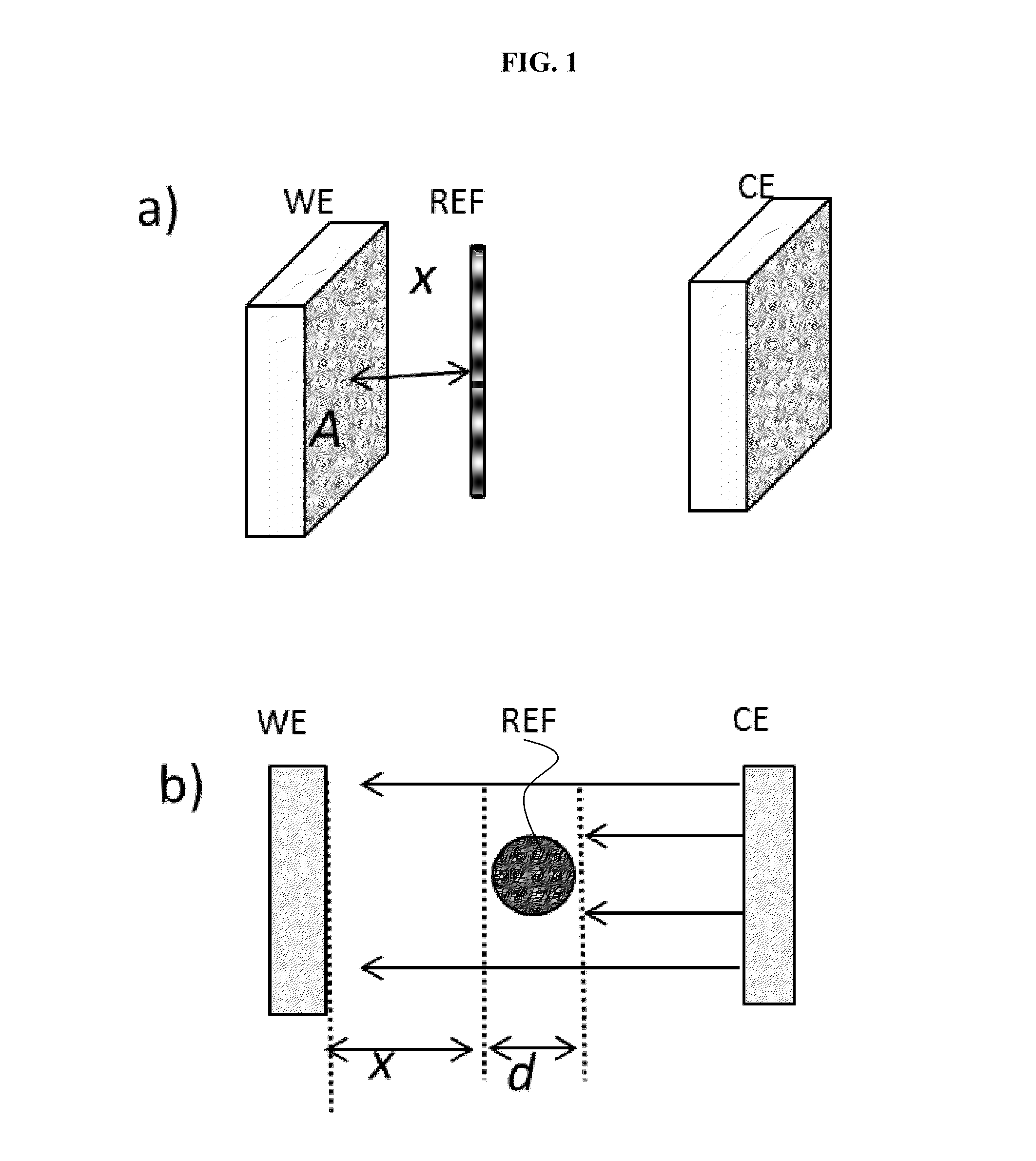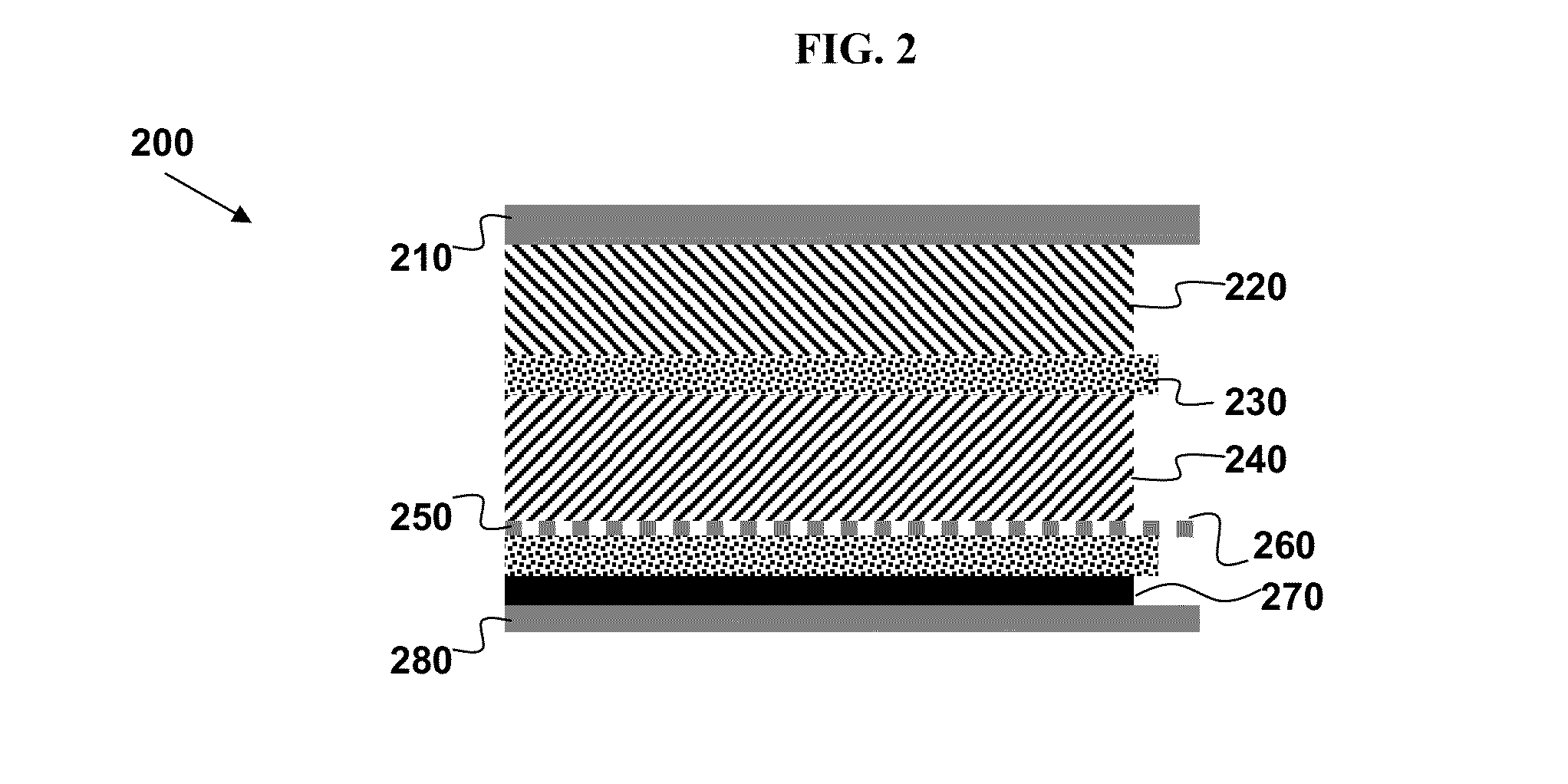Battery with reference electrode for voltage monitoring
a voltage monitoring and reference electrode technology, applied in the field of electrochemical system structures, can solve the problems of lithium-ion batteries causing fires in cars, mobile devices, computers,
- Summary
- Abstract
- Description
- Claims
- Application Information
AI Technical Summary
Benefits of technology
Problems solved by technology
Method used
Image
Examples
example 1
[0136]This Example 1 demonstrates monitoring of cathode and anode voltage behavior using a reference electrode incorporated in a prismatic pouch cell design.
[0137]Using the reference electrode design as depicted in FIG. 2 and described above, a lithium reference electrode is incorporated in a pouch cell design composed of a LiNi1 / 3Co1 / 3Mn1 / 3O2-based cathode material on Al mesh and a graphite-based anode on Cu foil. The positive electrode is composed of 84 wt % LiNi1 / 3Co1 / 3Mn1 / 3O2 (Toda Kogyo Corp., Hiroshima, Japan; trade name NCM-01ST), 3 wt % Super P carbon (MMM SA CARBON), 3 wt % KS6 (TIMCAL), and 10 wt % Kynar Flex 2801 (ELF ATOCHEM) and pressed onto Al mesh as a current collector. The negative electrode is composed of 89 wt % CGP-G8 (ConocoPhillips), 3 wt % Super P carbon (MMM SA CARBON), and 8 wt % Kynar Flex 2801 (ELF ATOCHEM) and casted onto copper foil. The lithium reference electrode is made from lithium metal compressed onto a copper foil. The capacities of the cathode an...
example 2
[0140]This Example 2 demonstrates monitoring of cathode and anode voltage behavior using a reference electrode at higher rates.
[0141]Using the reference electrode design as depicted in FIG. 2 and described above, a lithium reference electrode is incorporated in a pouch cell design composed of a LiNi1 / 3Co1 / 3Mn1 / 3O2-based cathode material on Al mesh and a graphite-based anode on Cu foil. The positive electrode is composed of 84 wt % LiNi1 / 3Co1 / 3Mn1 / 3O2 (Toda Kogyo Corp, NCM-01ST), 3 wt % Super P carbon (MMM SA CARBON), 3 wt % KS6 (TIMCAL), and 10 wt % Kynar Flex 2801 (ELF ATOCHEM) and pressed onto Al mesh as a current collector. The negative electrode is composed of 89 wt % CGP-G8 (ConocoPhillips), 3 wt % Super P carbon (MMM SA CARBON), and 8 wt % Kynar Flex 2801 (ELF ATOCHEM) and casted onto copper foil. The lithium reference electrode is made from lithium metal compressed onto a copper foil. The capacities of the cathode and anode are evenly matched; that is, the capacity ratio betw...
PUM
| Property | Measurement | Unit |
|---|---|---|
| pore size | aaaaa | aaaaa |
| porosity | aaaaa | aaaaa |
| porosity | aaaaa | aaaaa |
Abstract
Description
Claims
Application Information
 Login to View More
Login to View More - R&D
- Intellectual Property
- Life Sciences
- Materials
- Tech Scout
- Unparalleled Data Quality
- Higher Quality Content
- 60% Fewer Hallucinations
Browse by: Latest US Patents, China's latest patents, Technical Efficacy Thesaurus, Application Domain, Technology Topic, Popular Technical Reports.
© 2025 PatSnap. All rights reserved.Legal|Privacy policy|Modern Slavery Act Transparency Statement|Sitemap|About US| Contact US: help@patsnap.com



